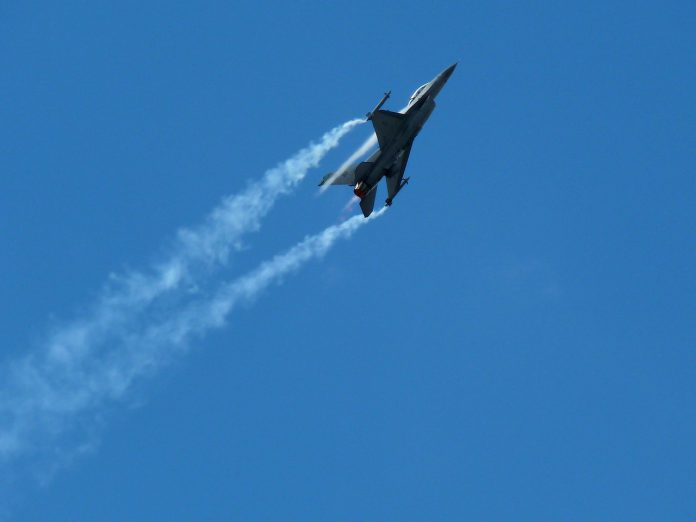This post is also available in:
 עברית (Hebrew)
עברית (Hebrew)
The U.S. Air Force is introducing a new in-flight training capability for its fleet of F-16 fighter jets with the integration of the Airborne Tactical Augmented Reality System (ATARS). The system, which uses a helmet-mounted display, is designed to project synthetic images of airborne threats such as enemy aircraft, enabling pilots to train in real-time against virtual adversaries during live flight.
According to the press release, ATARS is being integrated into the F-16 Fighting Falcon, also known as the Viper. The system will allow pilots to experience simulated air combat scenarios without the need for additional aircraft or physical targets, combining live training with virtual overlays.
The technology, developed to support high-fidelity training in constrained airspace, uses a low-latency, network-agnostic architecture to ensure the accuracy and safety of the training environment. According to its developers, the system delivers high-resolution, full-color synthetic visuals that operate in real-world flight conditions without interfering with pilot performance.
One of the key goals of ATARS is to replicate the complexity of modern aerial engagements. The system supports dynamic, maneuvering virtual opponents, providing a level of realism previously not achievable with traditional flight simulators or dissimilar air combat training. The system also collects structured data to help assess pilot performance and readiness.
ATARS has already been integrated into the T-38 Talon trainer aircraft and is also in use with other platforms such as the MC-130 and the BAE Systems Hawk T-2, used by the Royal Air Force. Its deployment on the F-16 represents a significant step toward broader adoption across operational combat aircraft.
In addition to ATARS, the developers have also worked on the Enhanced Visual Environment (EVE) headset, a wearable augmented reality device designed for use in high-speed, outdoor settings. This hardware enables realistic projection of virtual elements into the pilot’s field of view under demanding flight conditions.
The integration of augmented reality systems like ATARS into frontline jets reflects a broader shift toward more flexible and scalable training solutions in modern air forces.


























